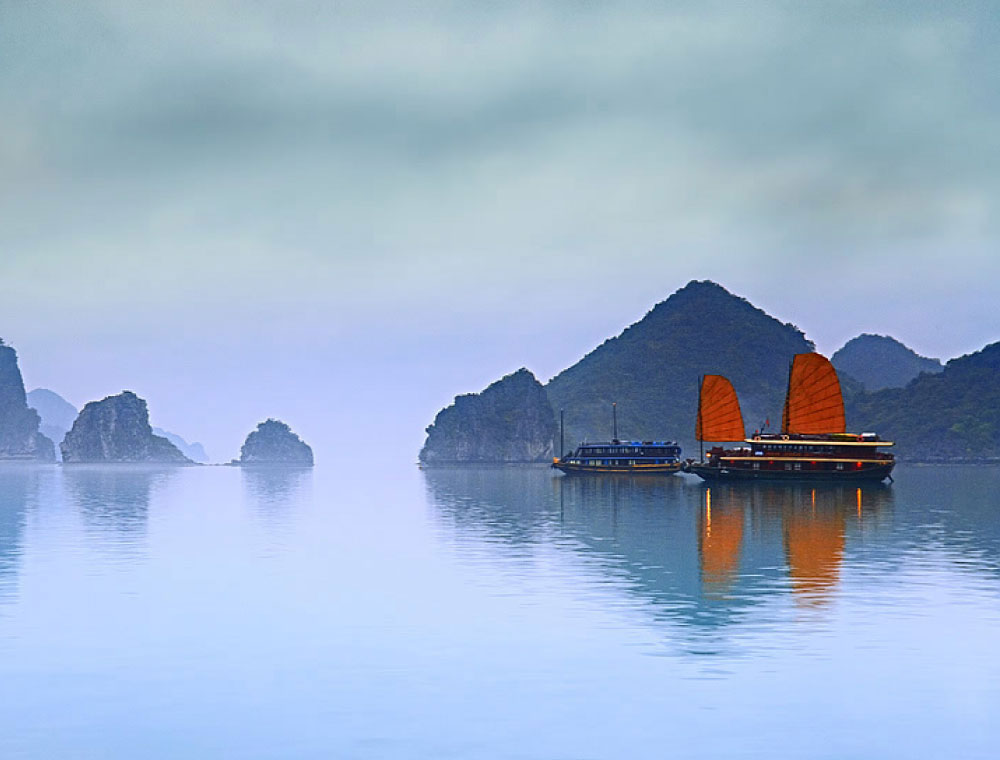DINH AND LE TEMPLES
Dinh Temple was built in the shape of a Chinese character. Through the first entrance called Ngo Mon, there is a stone royal bed with Nghe (imaginary animals of the old times) standing on both sides. Inside the temple is Khai Thanh in worship of Emperor Dinh's parents. The temple consists of three parts: Bai Duong for the community, Thien Huong in honour of mandarins, and Chinh Cung where Dinh Tien Hoang’s statue is located.
Le Temple is almost the same as Dinh Temple in term of architectural design, except for some details. Le Temple also consists of three parts: Bai Duong, used for the community, Thien Huong, in memory of the royal mandarins of Le King, and finally, the altar in memory of the King. The statue of Le Hoan is at the centre, on the left is the statue of Queen Duong Van Nga and on his right is that of Le Ngoa Trieu, his fifth son and the third King of the First Le dynasty.
HOA LU ANCIENT CAPITAL
In 968 Dinh Bo Linh ascended to the throne and took the name of King Dinh Tien Hoang. The country was named Dai Co Viet and Hoa Lu became the capital city for 41 years (968-1009). Twelve years were spent under the Dinh Dynasty beginning with King Le Dai Hanh. King Le Dai Hanh was credited with building many palaces and made the royal city more beautiful and magnificent. In 1010 Ly Thai To moved the capital city of Hoa Lu to Thang Long. On the 10th day of the 3rd lunar month each year, a great number of pilgrims come to Hoa Lu to pay tribute to Kings Dinh and Le.
VUON THI
This village still retains typical characteristics of North Vietnam countryside. One may mistake that it is a world away; it is simply a short drive from the bustling Hanoi. The lush vegetations, typical rural houses with tile roofs, and friendly villagers with rustic simplicity all are so inviting to visitors. The trip to the village offers visitors many opportunities for real local interactions.
THE CAVES OF TAM COC
Known as "Ha Long Bay on the rice paddies", the three caves can only be reached by boats rowed along a stream and under Cong Rong, a stone bridge built in 1604 whose name means Dragon Culvert.
In the past, the Tam Coc karst system lay under the sea and water carved out the three caves: Hang Ca (Big Cave), Hang Hai (Second Cave) and Hang Ba (Third Cave).
CUC PHUONG NATIONAL PARK
The park is conveniently located on the route to several tourist attractions, including Bich Dong Pagoda, Hoa Lu, and Sam Son Beach. It was officially opened in 1960 as the first national park in Vietnam. There are plenty of plants and mammals living in the park. The Park is also home to hundreds of beautiful and strange birds and butterflies.
Thanks to the limestone terrain, Cuc Phuong National Park has a multitude of grottoes, including Thang Khuyet, Con Moong, Pho Ma, and Nguoi Xua, etc. Quen Voi, also part of the park, is where Nguyen Hue’s army was stationed before it made its surprise attack on Thang Long and defeated Qin enemies in the spring of 1789.
Global environmental programs led by the UNDP, United Nations Development Program, and FFI, Flora and Fauna International, researched the distinguished primitiveness of the tropical forest and the monsoon influence on Southeast Asia in Cuc Phuong National Park.
